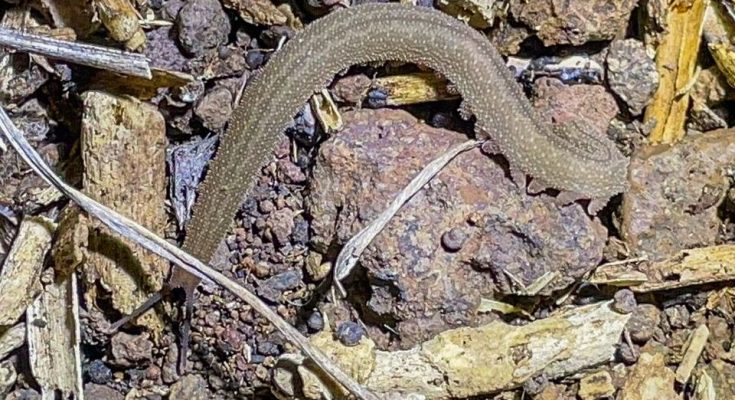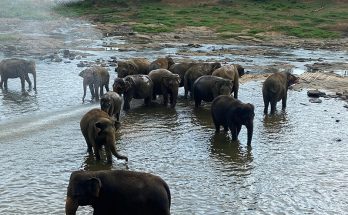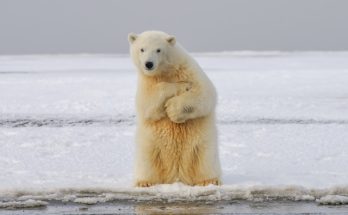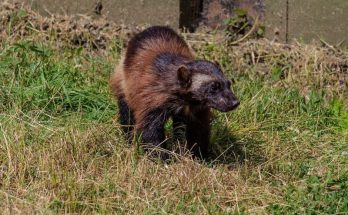New York/CMEDIA: The creation this month of a new marine reserve in Ecuador will secure a biological corridor for endangered species, including sea turtles, manta rays, whales and sharks.
The 60,000-square-kilometer reserve forms part of the East Tropical Pacific Marine Corridor that stretches from Ecuador to Costa Rica, and will protect marine life from the threats of industrial fishing and climate change. The Hermandad (Fraternity) reserve is particularly important as it is part of the transitory breeding route for endangered marine species.
Improving the connectivity of protected areas is one of the challenges of conservation globally, and although Latin America and the Caribbean are at the forefront, more could be done, say experts. The region has over 10 million-square-kilometers of terrestrial and marine conservation areas, or 24.6 per cent of land surface and 23.2 per cent of marine spaces, already under some form of conservation.
“Now that the world embarks on the vision of effectively protecting 30 per cent of the planet’s terrestrial and marine areas, Latin America and the Caribbean could improve and expand the conservation of its natural capital, and jointly promote solutions to the triple planetary crisis of climate change, nature and biodiversity loss and pollution and waste,” said Jacqueline Álvarez, United Nations Environment Programme (UNEP) Regional Director.
This week, the Forum of Environment Ministers of the region met to review these challenges, accelerate action and commemorate 40 years of cooperation.https://www.youtube.com/embed/SakcqqUgUuo
Representativeness of ecosystems
Despite global efforts to meet the international goals of coverage of protected areas, research shows that the protection is not yet representative.
Latin America and the Caribbean accounts for 24 percent of terrestrial ecoregions and 19 percent of the world’s marine ecoregions, but only half of the biomes in the region reach or exceed 17 percent protection.
Some ecosystems, such as Mediterranean forest and scrub or temperate grasslands and savannas, are particularly underrepresented, according to the Protected Planet Report 2020: Latin America and the Caribbean, by the UNEP World Conservation Monitoring Centre (UNEP-WCMC), the International Union for Conservation of Nature (IUCN), RedParques and the World Wide Fund for Nature (WWF).
As countries work towards meeting the targets of the post-2020 global biodiversity framework – which means further expanding their protected areas to cover 30 per cent of sea and land surfaces – the report says it will be crucial to prioritize at-risk species and ecosystems in a diversity of landscapes.

Ensuring connectivity
Jaguars provide an illustration of how important connected, protected areas are. After spending two years with its mother, a young jaguar can make a journey of up to 70 kilometers to find its own territory, hunt and reproduce. Researchers have detected up to 26 cross-border areas where these journeys can occur.
Keeping ecosystems connected and protected is essential for jaguars and other species to thrive. But approximately 33 per cent of the protected areas in the region do not have good connectivity, finds UNEP’s 2020 Protected Planet Report. This means that a third of the area functions as conservation islands, a situation that impedes the ecological flows and the exchanges that guarantee the health of species. This could lead to the loss of local populations of species and possible ecosystem collapse, the authors warn.
To address this challenge in the Caribbean, the UNEP Regional Office in Latin America and the Caribbean serves as the secretariat of the Caribbean Biological Corridor (CBC), an initiative of Cuba, Haiti, the Dominican Republic and, most recently, Puerto Rico. Under this effort, which began in 2007, member countries protect more than 200,000 km2 of marine and coastal ecosystems, of which 91 per cent are of importance for connectivity.
“The CBC’s marine and coastal ecosystems are key to the migratory routes and reproduction of threatened marine species such as sea turtles, whale sharks, sperm whales and oceanic sharks,” says José Gerhartz, technical specialist of the CBC.

Measuring management effectiveness
UNEP’s report shows that less than half of over 50 countries and territories evaluated systematically measure and document the effectiveness of their protected areas.
Improving transparency and accountability remains one of the biggest challenges for the region. The report also finds that analysis needs to be done systematically and periodically and that other non-governmental actors, such as academia, should be included to improve transparency.
An example of progress is the transnational initiative Visión Amazónica (Amazon Vision). Launched in 2015, its mission is to strengthen and integrate protected area systems in the nine countries and territories of the Amazon and to improve conservation in the world’s largest tropical forest.
The project developed a protocol and a methodological guide for the analysis of the management effectiveness of protected areas, a tool that guides authorities to produce standardized data towards science-based decision-making.
Visión Amazónica is a project funded by the European Union in which UNEP, IUCN, WWF and RedParques participate, under the coordination of the Food and Agriculture Organization of the United Nations (FAO).
Governance and equity in management
The Protected Planet regional report states that sharing power over protected areas makes us “more effective, efficient and fair.”
According to the UNEP-WCMC Protected Planet database 60 per cent of the region’s protected areas are under governmental management, 14.4 per cent are privately owned, 7 per cent are managed by indigenous people and just one per cent are jointly managed. The result of this is that non-governmental governance models are underrepresented.
“As we confront the urgency of combating the global extinction crisis, climate crisis and the disintegration of human communities, we have to recognize that sovereign state leadership is insufficient both financially and strategically if we are to be successful. The role of private and institutional philanthropy is essential”, says Kristine Tompkins, president of Tompkins Conservation and UNEP’s Patron of Protected Areas.
Tompkins Conservation has been instrumental in the creation of 13 national parks in Chile and Argentina, conserving 14.8 million acres. The organization sees the creation of parks as a starting point and works towards the restoration of their ecosystems. This includes bringing back missing species such as jaguars in the Iberá Wetlands of Argentina and the highly endangered huemul in Chile. This reintegration of species is helping local communities thrive through nature-based economies.
The Forum of Ministers of Environment of Latin America and the Caribbean is the oldest and most relevant cooperation body for environmental authorities in the region. The Forum of Ministers of the Environment is currently promoting solutions to important regional challenges: the progressive closure of dumpsites, the finance mechanisms for climate action and forests protection, the advancement of circularity, air-quality monitoring, among others. The Forum of Ministers of Environment of Latin America and the Caribbean marked its 40th anniversary with a special session in Costa Rica on January 27 and 28, 2022.
#Wildlife; #Ecosystem; #AirQuality; #CarribeanWildlife; #EndangeredSpecies





